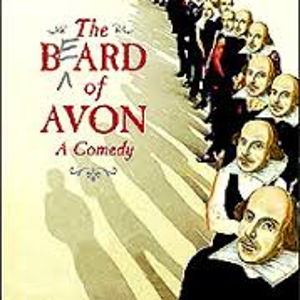
Overview
Synopsis
Depressed, creatively stifled, and seeking space from his scolding and promiscuous wife, Anne Hathaway, simple stage-struck farmer Will Shakspere runs away to London, to join a company of Players. Sincere, innocent, and eager to please, Shakspere quickly finds himself involved in court intrigue at the highest level when he becomes the official artistic beard for Edward de Vere, Earl of Oxford, a sophisticated and powerful nobleman, who wishes to produce his plays anonymously. Shakspere’s natural talent blossoms as he begins to collaborate with the clever Earl, and he finds earthy passion with an alluring bawd named Lucy. But events quickly spin out of his control as Oxford seduces Lucy; the Queen herself demands his name for her masochistic masterpiece “The Taming of the Shrew,” and every craven courtier who fancies himself an author pitches a script, hoping to be produced under the convenient name of William Shakespeare. Can simple Will Shakspere from Stratford-Upon-Avon hang on to his own identity, or will he be overwhelmed forever by the demands of others? Amy Freed’s The Beard of Avon is a rollicking, farcical comedy, which dives gleefully into the greatest authorship controversy of all time to create an entertaining and compelling alternate history, in language rich with poetry, dirty jokes, and universal truths, much like that of the Bard -- or Bards -- themselves.
Show Information
Context
Plot
Characters
| Name | Part Size | Gender | Vocal Part |
|---|---|---|---|
|
Lead |
Male |
Spoken |
|
|
Lead |
Female |
Spoken |
|
|
Lead |
Male |
Spoken |
|
|
Supporting |
Male |
Spoken |
|
|
Supporting |
Male |
Spoken |
|
|
Supporting |
Female |
Spoken |
|
|
Supporting |
Male |
Spoken |
|
|
Featured |
Male |
Spoken |
|
|
Featured |
Male |
Spoken |
|
|
Featured |
Male |
Spoken |
|
|
Featured |
Male |
Spoken |
|
|
Featured |
Male |
Spoken |
|
|
Featured |
Male |
Spoken |
|
|
Featured |
Male |
Spoken |
|
|
Featured |
Either Gender |
Spoken, Treble/Boy Soprano |
|
|
Featured |
Female |
Spoken |
|
|
Featured |
Male |
Spoken |
Songs
A song with an asterisk (*) before the title indicates a dance number; a character listed in a song with an asterisk (*) by the character's name indicates that the character exclusively serves as a dancer in this song, which is sung by other characters.
Monologues
Scenes
Key Terms
Sorry! We do not currently have terms for this guide.
Videos
Quizzes
Sorry! We do not currently have quizzes for this guide.
Themes, Symbols & Motifs
Sorry! We do not currently have learning modules for this guide.
Quote Analysis
Sorry! We do not currently have learning modules for this guide.
